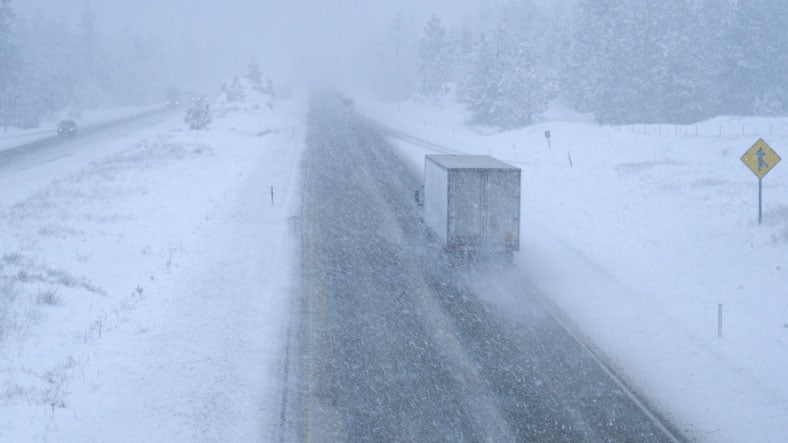7 Key Steps to NJDEP Perimeter Air Monitoring Compliance
Environmental remediation and construction engineers are facing a June 3 deadline to comply with the recently issued perimeter air monitoring (PAM) guidelines from the New Jersey Department of Environmental Protection (NJDEP).
The NJDEP outlined these guidelines in its Perimeter Air Monitoring Technical Guidance document. During soil-disturbing and other remediation activities that can potentially impact off-site receptors, the agency requires the real-time monitoring of contaminants of concern.
The document stipulates the steps field engineers must take—including crucial periodical confirmatory analytical sampling. This step will demonstrate the efficacy of the real-time perimeter air monitoring (PAM) program—and that the worksite is compliant and not a danger to the community. Such proof can help prevent any operational disruptions.
The Devil in the PAM Details
The NJDEP made the guidance public last December, with input from Triumvirate Environmental’s own experts. Naturally, New Jersey construction and remediation engineers have questions and concerns. Fortunately, there are concrete and feasible ways to approach guideline adoption—that was the key message from our March webinar, “NJDEP Air Monitoring for Engineers: What You Need to Do.”
During the webinar, a Triumvirate Environmental expert explained that PAM’s main goal is to avoid impacting any area adjacent to active contaminated sites. Engineers must ensure any airborne issues don’t spread to the surrounding community—that is why the NJDEP guidance document emphasizes real-time air monitoring.
Ultimately, compliant PAM solutions enable project managers to ensure that New Jersey’s off-site receptors (like schools, playgrounds, residential areas, and the like) are protected from unpleasant odors, dangerous particulates and gases, and other threats.
The guidance document applies to licensed site remediation professionals (LSRPs) and other non-LSRP environmental professionals. Broadly speaking, PAM guidance will impact projects that:
- Operate 20 working days in any 30-day period
- Have contaminated sites, where there are soil-disturbing and/or other remediation activities that can potentially affect off-site receptors
7 Key Compliance Steps
Our “NJDEP Air Monitoring for Engineers: What You Need to Do” webinar covered the seven essential steps to NJDEP compliance. We’ll briefly summarize these key steps for engineers to explore further. Adherence requires managers to:
- Identify contaminants of concern (COCs): This involves performing data analysis on soil, sediment, and water for volatile organic compounds (VOCs) like benzene, particulates, and asbestos.
- Pinpoint potential airborne exposures: Engineers must create a conceptual site model that maps source material and emission-generating activities. This model must also mark such things as potential mechanisms for inhalation exposure and transport.
- Establish health-based threshold values (HBTVs) and response levels: This is an essential, although highly technical, requirement. Project stakeholders can use the PAM calculator on the NJDEP website to assist.
- Select air monitoring methods and technologies: A PAM program must require a combination of real-time monitoring instruments and the conducting of periodic confirmation samplings.
- Establish sampling locations and a schedule: These will vary depending on the sort of operation ongoing. For instance, when a remediation project is live, engineers must enforce continuous, real-time monitoring throughout the entire workday.
- Address exceedances of response levels and HBTVs: Project managers must document any instance of baseline measurement violation. They also need to note what response they took, such as applying water suppression and the like.
- Review and modify the plan as needed, with documentation: Once the NJDEP-compliant PAM program is in place, managers must regularly review its operations and guidance plan. When needed, they must modify and improve the guidance to ensure program efficiency.
PAM Instruments, Communication, Data, and More
Our webinar also covered the best way to adhere to these steps. Above all, it’s essential that stakeholders understand all the particulars of the guidance document and ensure they remain in complete compliance through all project phases.
Besides that, it's key for managers to deploy the most current mobile-accessible, cloud-based PAM and meteorological instruments available. Select those solutions that support wireless telemetry—these can carry data quickly and reliably from all sensors deployed throughout the worksite. And they can provide special communication capabilities, including real-time alerting via text message or email.
There are other factors. Sometimes variables like site size or weather can play a role in program success. For example, New Jersey can have harsh winters—meaning sunlight will sometimes intermittently be unavailable for solar-powered gear. Engineers should plan accordingly, configuring the solution to the specifics of their work areas, atmospheric conditions, and so on.
Finally, engineers will require a wide variety of data to support compliance and safety—data derived from calibration records, field notes, and more. Such information, like a chain of custody record, is useful over the long-term—especially if there are any complaints from off-site receptors. As a rule of thumb, it's better to have the data and not need it—rather than to need the data and not have it.
Partnership for NJDEP Air Monitoring Compliance
Given the complexities and burden of adhering to the NJDEP guidance document, engineers may see the benefits of working with a trusted vendor to assist. Triumvirate Environmental is such a partner. Our environmental remediation and monitoring team is based in Florham Park—it’s also highly seasoned, offering nearly 20 years of experience in PAM services delivery.
We can create site-specific PAM plans and calculate an HBTV and response level. We also offer the Greenlight™ System, a proprietary real-time, cloud-enabled PAM solution, accessible via any web-enabled device.
Questions? Talk to us today.






